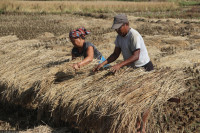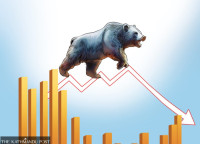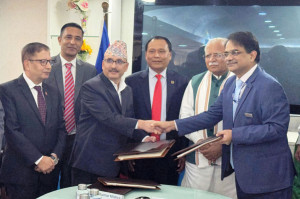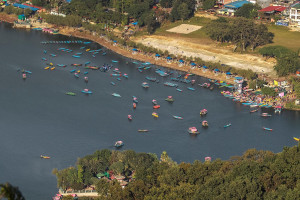Money
ADB predicts 5.5pc growth rate in 2015
The Asian Development Bank (ADB) on Thursday forecast that Nepal’s growth rate would strengthen from 3 percent in 2014 to 5.5 percent in 2015 on the back of agriculture gro-wth, pace of reconstruction work and revival of tourism.
The Asian Development Bank (ADB) on Thursday forecast that Nepal’s growth rate would strengthen from 3 percent in 2014 to 5.5 percent in 2015 on the back of agriculture gro-wth, pace of reconstruction work and revival of tourism.
However, it has cautioned that the projected growth could plunge if the adverse political situation continues, capital expenditure is slow and there is unfavourable rainfall behaviour. If the adverse situation prevails, growth could drop to 4.5 percent or below.
On the other hand, the government has predicted a growth rate of 6 percent.
Unveiling the macro economic update, ADB Country Director Kenichi Yokoyama, said that Nepal’s growth would be based on how fast post-earthquake reconstruction activities are conducted.
He stressed the need for the government’s role to increase investment in the infrastructure sector. “The government also needs to focus on the effectiveness of its fiscal policy to influence the economy, which could ensure growth to revenue collection to maintain the fiscal balance.”
Economist Chandan Sapkota said that the pace of the post-earthquake reconstruction work and its effectiveness and monsoon behaviour would be key determining factors for Nepal’s growth.
As the government has targeted 6 percent annual growth, the ADB said that the goal would be met if the growth rate of agriculture sector increased by 2.5 percent and the non-agriculture sector by 7.7 percent. The growth of the manufacturing sector should reach at least 13.6 percent and the service sector 6 percent, according to the ADB report.
Besides agricultural growth, the pace of reconstruction and tourism revival, the ADB said that growth hinged on other economic indicators like infrastructure development, improvement
of the service sector and increased inflow of remittance.
Nepal’s growth shrank to 3 percent in the last fiscal year against the projected 4.6 percent largely due to a poor monsoon that reduced the output of summer crops followed by the April 25 earthquake. The ADB said that the industrial and service sectors were severely hit by the tremors.
“A poor monsoon led the agriculture sector growth to fall to 1.9 percent, against the projected 2.6 percent,” Sapkota said. Similarly, industrial growth shrank to 2.6 percent against the predicted 4.6 percent and the service sector dropped to 2.1 percent against the projected 6 percent growth.
The ADB has projected that the inflation rate would hover at 9.5 percent, which is more than the government’s estimate of 8.5 percent. The negative impact on the supply chain from the ongoing strikes mainly in the Tarai region will push up inflation. Likewise, a food price hike in India will also affect the domestic market.
The report also pointed out that the government’s capital expenditure fell to 69.9 percent in the last fiscal year from 78.4 percent in the previous fiscal due to a delay in the implementation of the budget and a lengthy procurement process.
Last year, Nepal observed a fiscal deficit of 0.2 percent of the GDP. The ADB suggested that the government should make efforts to maintain fiscal sustainability by achieving its targets for public expenditure, revenue collection and policy reform.




 17.12°C Kathmandu
17.12°C Kathmandu














